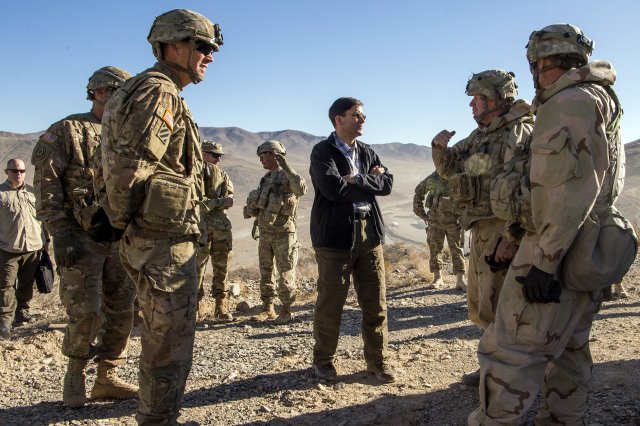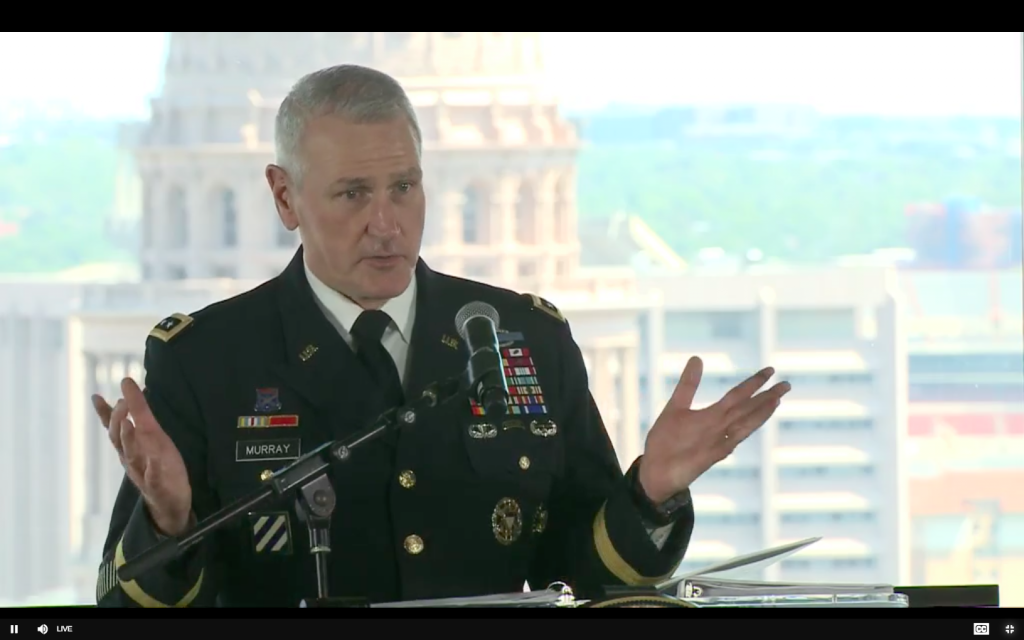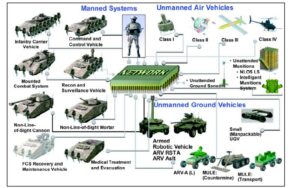DEFENSE NEWS CONFERENCE: The Army’s new Futures Command won’t tear down the most failure–prone procurement system in the entire US military. Instead, both its commander and the Army’s No. 2 civilian emphasize they want to be just “a little bit disruptive” and “work with the institution.” That will disappoint critics of the service’s chronically troubled acquisition programs who saw the Army’s much-touted “biggest reorganization in 40 years” as an opportunity to tear the whole thing down and start again.
The necessary change to Army culture “is going to take time,” brand-new four-star Gen. John “Mike” Murray said here yesterday, “and I think you do that by being a little bit disruptive, but not being so disruptive you upset the apple cart.”
“It’s hard, Sydney, because you know, you have to work with the institution,” Undersecretary Ryan McCarthy told me after he and Murray addressed the conference. “You don’t want to go in there and just break things.”
Work Through The Pain
Reform’s still plenty painful, acknowledged McCarthy, who’s played a leading role in round after round of budget reviews, cutting some programs to free up funding for the Army’s Big Six priorities. The choices were especially hard for 2024 and beyond, when top priorities like robotic armored vehicles and high-speed aircraft move from the laboratory to full-up prototypes.

Bell V-280 Valor tiltrotor in level flight with rotors facing forward. The V-280 is widely considered the leading candidate for the Future Vertical Lift assault aircraft.
“You’ve got a lot of people out investing, and they’re all doing good things, but they weren’t the priorities of the leadership,” McCarthy told me yesterday. “You have to explain to folks why you’re doing what you’re doing. You need them focused on the priorities of the institution” – that is, of the Army as a whole, as set by leadership, rather than of bureaucratic fiefdoms with a long history of going their own way.
But what about the pushback from constituencies who see their priorities being cut, particularly upgrades to keep current platforms combat-ready until their replacements finally arrive?
“If you don’t accept the risk that you talked about, (if you don’t) slow down or stop the upgrade of legacy systems, you never get to next generation equipment,” brand-new four-star Gen. John “Mike” Murray said here yesterday, “and I think you do that by being a little bit disruptive, but not being so disruptive you upset the apple cart.” In other words, funding for incremental upgrades will crowd out funding for potential breakthroughs. That’s largely because the incremental approach looks lower-risk – right up to the point where the enemy fields something revolutionary that your evolutionary approach can’t counter.
“The question really becomes, do you want to upgrade what you have forever?” Murray went on. We’ve made tremendous improvements to our 1980s-vintage helicopters, for example, but there are things they physically just can’t do. “At some point you run out of physics, and you run out the capability to upgrade it to meet the threat,” he said.
To avoid that long-term risk, Murray said, you need to accept the short-term risk of moving money from incremental upgrades to radical breakthroughs. The calculation, he said, is “what I have right now is good enough; if I go fast enough, I can deliver new capability in time to close that window of risk.”
“Fast enough,” however, is hardly a phrase most acquisition experts would associate with Army programs. To get faster, Murray said, you can’t just try to do the current aprocess faster: You need to cut out entire steps and accept a higher level of risk, particularly early in a program when it can be slowed down or cancelled outright without wasting billions or disrupting Army modernization.
“We have to be able to accept risk at certain points in the life of a program….up front,” Murray said. “Fail early and fail cheaply is something we have to inculcate in people.”

Army Secretary Mark Esper speaks to soldiers at the National Training Center on Fort Irwin, California
Risk and Reward
Murray is asking for a tremendous cultural change from a risk-averse Army, the general acknowledged. But it’s a cultural change to a specific part of the service, not the whole. “I’ve been told by many people you need to completely change the culture,” Murray said. “There is a lot good about Army culture, if you go to any battalion, brigade, division, corps.” Young soldiers, officers, and scientists can innovate rapidly in the field: The problem is in the bureaucracy.
Changing the bureaucracy requires changing the people who run it, which in turn requires new ways to select, keep, and promote them.
“What you get in the Army is what you reward,” Murray said. “We do a really, really good job of developing the next division commander, the next corps commander, the next brigade commander. We have never focused on developing the type of talent we need in this organization.(emphasis added).”
“We’ve got to change our policies for promotion in order to incentivize these really sharp men and women to want to do these jobs,” McCarthy told me. “You’ve got to incentivize someone to want to be in that job for four or five years,” in contrast to the current system that reassigns up-and-coming officers every 18 to 24 months. ” “Dr. Esper, the chief, the vice, and I, the four of us feel very strongly about tenure for program managers, tenure for Cross Functional Team leaders.”
The Navy was able to move to nuclear-powered submarines and aircraft carriers in large part because Adm. Hyman Rickover headed Naval Reactors for decades, McCarthy noted. “That is an extraordinary case, but that’s essentially the philosophy,” he told me: “Keep the individuals in these jobs long enough so you get through key milestones of the development.”
That said, McCarthy himself serves at the pleasure of the president, as does Secretary Mark Esper, while Gen. Mark Milley is three years into a standard four-year term as Army Chief of Staff. So, even as Futures Command judiciously disrupts the Army’s status quo, it also has to take institutional root before its founding fathers disappear. But how?
Congress Without McCain
“Congress’s support is just essential,” McCarthy told me. Nor is the legislature’s role confined to writing checks. It was Congress that stepped in to protect Adm. Rickover from mandatory retirement, for example. It was late Senate Armed Services Committee chairman John McCain who helped bludgeon the Army into creating Futures Command.
“Senator McCain was a wonderful champion for us, and it’s big loss for not just the Army but the country,” McCarthy said. “But there’s a lot of members on that committee: (ranking Democrat and West Point graduate) Sen. Reed was been extremely helpful in this process, Sen. Cotton’s been very helpful, Sen. Sullivan… and Sen. Inhofe (now chairman) really drove this NDAA (the National Defense Authorization Act).”
Future Command must win over both the Army and Congress. “It’s establishing buy-in over the next three, four, five years from the institution (of the Army),” Murray told the conference. “It’s about establishing buy-in on Capitol Hill, because if I don’t have buy-in there, this won’t survive.”
The only way to get that buy-in is results. “It’s about showing successes, it’s about showing how we can go faster,” Murray said. “It’s about showing the army we can be value added to what’s most important to them, and that’s enabling the warfighter to do their job on the battlefield, whether that’s today or 30 years from now.”
But going faster requires taking risks, and if Murray & company do their jobs, at least some of their projects will fail. Ideally they’ll fail early and cheaply, as Murray hopes, but even a single misfire in an early test can trigger a blizzard of critical stories in the news and pointed questions in committee. Even if Futures Command can change Army to accept short-term risk for long-term success, it still has to convince a fickle Congress to stick with it.
Head start: Early ’25 may be first flight for Black Hawk with T901 engine
Sikorsky is using remaining FARA dollars to test out the new T901 engine in anticipation of integrating it on a UH-60 M Black Hawk later this year.
































